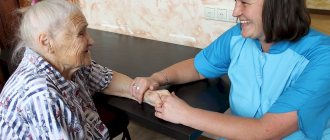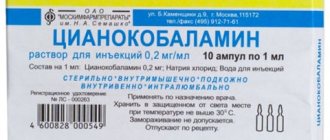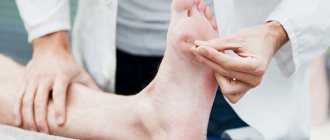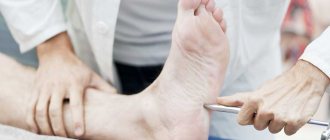Meniere's disease is a disease of the inner ear of unknown etiology. During an attack of the disease, tinnitus, dizziness and hearing loss are observed. The duration of vestibular crises ranges from several minutes to several days and may be accompanied by nausea, vomiting, increased sweating and imbalance. The prognosis is favorable, but repeated attacks are painful for the patient and lead to decreased ability to work.
The main goal of treatment for Meniere's disease is to relieve and prevent attacks. If conservative therapy is ineffective, surgical intervention is indicated for patients.
Anatomy and physiology of the inner ear
Anatomically, the hearing organ consists of three parts:
- The outer ear includes the external auditory canal and the pinna;
- The middle consists of the auditory ossicles, the Eustachian tube and the tympanic cavity;
- The inner ear includes the sensory apparatus of the organ of hearing and balance. The vestibular analyzer consists of the vestibule of the cochlea and the semicircular canals. The auditory analyzer is located in the cochlea. The cochlea is a bony, spirally convoluted canal, tapering from the base to the apex. Inside the bone canal there is a membranous labyrinth, completely repeating the structure of the first. The membranous labyrinth is filled with endolymph and bone perilymph. Perilymph is similar in composition to cerebrospinal fluid, as it communicates with the subarachnoid space of the brain. The cochlea contains three sections: the vestibular, middle and tympanic scala. The vestibular septum is separated from the scala mediali by Reisner's septum, and the scala mediali is separated from the scala tympanum by the basilar membrane. The birth of a nerve impulse is ensured by the activity of the cells of the organ of Corti. This is an accumulation of neuroepithelial elements on the basilar membrane. Cells of the organ of Corti perceive and transform auditory stimuli into a signal for the brain.
Sound is produced by the passage of air through the auricle to the eardrum, which causes the auditory ossicles to move. The vibrations of the ossicles cause the movement of the peri, then the endolymph. This in turn excites the auditory receptors and a nerve impulse is born that goes to the hearing center of the cerebral cortex.
Causes
Enlarged endolymph can be caused by:
- congenital anomalies: absence of the vein of the peri-vestibular canaliculus, underdevelopment of the cochlea;
- hereditary predisposition;
- endocrine disorders, especially adrenal and thyroid disorders;
- atherosclerosis, spasm of the coronary arteries;
- degenerative changes and spinal injuries;
- violation of carbohydrate, fat, protein and water-salt metabolism;
- vegetative-vascular dystonia;
- hypercoagulability;
- autoimmune processes;
- hypovitaminosis.
Poisoning with alcohol, drugs and allergies can provoke vestibular crises. The role of cytomegalovirus and herpes simplex virus among the causes of Meniere's disease has now been proven.
Causes and course of the disease
Currently, not much is known about the causes of Meniere's disease.
All currently known causes of Meniere's disease can be divided into local, which relate directly to the middle and inner ear, and general, which relate to various pathologies of the whole organism as a whole. Local reasons include:
- dysfunction of the endolymphatic duct - a channel that extends from the labyrinth towards the temporal bone and is a blindly ending duct;
- formation of new vessels inside the endolymphatic sac;
- reduction in size and closure of the vestibular aqueduct (canal in the inner ear);
- reduction in the number of air cavities (cells) in the temporal bone.
Common reasons include:
- circulatory disorders;
- violation of water-salt balance in the body;
- allergic reactions to various compounds;
- hormonal disorders.
Meniere's disease is based on vascular spasm or dilatation, as well as their weak and permeable walls. As a result, the inner ear swells and begins to put pressure on the walls of the labyrinth. In turn, disturbances occur in the labyrinthine fluid at the biochemical level.
As a result, all components of the inner ear expand and increase in size. Due to the increase in fluid volume, the labyrinth stretches, the internal elements of the ear are displaced or damaged. This problem also includes a violation of vascular autonomics, controlled by the central nervous system.
Classification
Meniere's disease should be distinguished from the syndrome of the same name.
Meniere's syndrome is a concomitant factor of a certain disease; BM represents an independent nosological unit. Meniere's disease, according to ICD-10, corresponds to class H81—vestibular function disorders, code H81.0.
Along the course, endolymphatic hydrops occurs:
- classic, when auditory and vestibular disorders appear simultaneously;
- if the balance is first disturbed - vestibular;
- in the cochlear form, auditory disorders primarily occur.
According to the severity, BM is classified into mild (short attacks with a break of at least a month), moderate (crises up to 6 hours) and severe (exacerbations once a day with loss of ability to work). There are also reversible and irreversible forms of the disease. If reversible, it is possible to restore the functions of the auditory analyzer.
Forecast
Unfortunately, it is impossible to give 100% accurate predictions about the course of Meniere's disease. The progression of this disease largely depends on the individual characteristics of the body, the age of the patient, his living conditions, and the presence of other diseases. In the history of otolaryngology, there are cases when Meniere's disease, after a long course, manifested itself with less and less severe symptoms until the situation was resolved favorably for the patient - systemic dizziness stopped, and the quality of life was restored. But in most cases, this disease actively progresses, causing irreversible hearing impairment. If the healthy ear is involved in the process, complete deafness may occur, which requires cochlear implantation and the use of other methods of hearing prosthetics.
Symptoms
The disease is named after the French physician Prosper Meniere. He was able to prove the connection between hearing impairment and pathology of the hearing system, and not the brain.
Meniere's disease occurs with periods of exacerbations and remissions. The process is often one-sided, with the exception of autoimmune lesions. The primary signs of an attack of endolymphatic hydrops are sudden (labyrinthine attacks) dizziness, tinnitus and gradually increasing hearing loss.
Secondary symptoms of endolymphatic hydrops crisis:
- nausea, vomiting;
- increased sensitivity to loud sounds;
- nystagmus - frequent vibrations of the eyeballs;
- diarrhea;
- frequent urination;
- increased salivation;
- increased sweating;
- blood pressure is usually reduced;
- heaviness, feeling of pressure on the side of the affected ear.
Labyrinth attacks occur suddenly, often at night or during the day. Attacks occur against the background of normal health, but they can be triggered by stress, malnutrition, poisoning, allergic reactions and physical stress. Sometimes patients feel the onset of an attack several hours or even days in advance. Attacks with BM are divided into:
- frequent (1-2 times a day, week, month);
- rare (several times a year);
- occasional (once every couple of years).
Vestibular disorders in peripheral type MD.
This type of imbalance is characterized by systemic vertigo and horizontal nystagmus. Systemic (true) dizziness occurs when the receptors of the balance organ are irritated. For differential diagnosis of the type of dizziness, the Dix-Hallpike test is used. The duration of attacks varies from several hours to several days. After a crisis, in the first 48 hours the patient feels fatigue and decreased ability to work. In severe and moderate forms of the disease, there is no working capacity. During remissions the condition is satisfactory.
Dizziness
The first symptom of a labyrinthine attack is dizziness (vertigo). It is caused by irritation and compression of the vestibular analyzer receptors. Dizziness with MD is characterized by a feeling of rotation of oneself or objects, and imbalance. The symptom is often accompanied by migraine-like headaches. During an attack, patients often cannot stand on their feet and take a horizontal position. For relief, patients close their eyes. Any movements of the head and body cause deterioration of the condition, increased dizziness, nausea and vomiting. An objective sign of exacerbation is nystagmus. It can be observed not only during, but also after the crisis for up to one week. Nystagmus in Meniere's disease can change direction: at the beginning of the attack it is directed towards the diseased ear, and at the end towards the healthy ear. Vertigo can be dangerous and cause injury because it often occurs suddenly without any previous symptoms. To eliminate this symptom, radical measures are often resorted to - removal of the vestibular nerve. In the final stage of the disease, instantaneous falls without dizziness occur (Tumarkin crises).
Hearing loss
During vestibular crises, patients note hearing impairment. Subjectively, the condition is described as congestion, a feeling of fullness or heaviness in the ear. Hearing loss in Meniere's disease is fluctuating. Fluctuating hearing loss is characterized by changes in hearing acuity - a decrease before and during attacks. Some patients experience a decrease in hearing acuity with each attack. Hearing loss is usually unilateral, but as it progresses, a second organ may be affected. This symptom is detected by audiometry. In the first stages of the disease, the perception of low frequencies is impaired. Sensorineural hearing loss increases as degenerative processes of spiral ganglion neurons increase.
Noise in ears
Tinnitus is low or mid-frequency.
It intensifies before and reaches its maximum during attacks. The ringing is sometimes accompanied by pain in the affected ear. Meniere's disease occurs in three stages:
- Initial (reversible) stage. Patients are bothered by rare (several times a year, sometimes every two years) attacks lasting an average of 2 hours. During this period, patients complain of tinnitus, vestibular dizziness, a feeling of fullness and pressure in the ear, nausea and vomiting. Tinnitus is intermittent, intensifies before an attack, and reaches maximum strength during a vestibular crisis. The first stage is characterized by fluctuating hearing loss, when the hearing loss is unstable. Hearing loss may be absent during the first attacks. However, in the future, hearing loss intensifies during the attack and is restored after its end. Sometimes hearing loss disappears immediately after a vestibular crisis and reappears a few days later. At the initial stage, the hearing threshold deteriorates when perceiving sound with low and medium frequencies. Nystagmus is recorded only during attacks and can last for several days.
- The second is the stage of pronounced clinical manifestations. During this period, all the symptoms of Meniere's disease are observed. Attacks are recorded every day or several times a month. Vestibular attacks are accompanied by severe dizziness, vomiting, increased sweating and other autonomic disorders. Tinnitus occurs constantly and may intensify during vestibular attacks. Also, patients are always bothered by a feeling of pressure, ear congestion and hearing loss on the affected side. According to the results of audiometry, hearing loss is usually grade I-III. A dehydration test in the second stage of Meniere's disease shows persistently increased pressure within the labyrinth. On vestibulometry, hyporeflexia of the labyrinth is noted, and during attacks - hyperreflexia.
- The third, final stage, is also called “burnt out”. During this period, dehydration tests do not provide relief from symptoms, and the patient is completely unable to work. Attacks of dizziness become less frequent, and imbalances, on the contrary, become more frequent. Fluctuating hearing loss is replaced by persistent, permanent hearing loss on the affected side, up to complete loss. At the third stage, the disease progresses and the second ear is involved in the pathological process. Vestibulometry displays hypo-, in advanced stages, and areflexia of the labyrinth. With Meniere's disease at the final stage, Tumarkin crises may occur - an instant fall without loss of consciousness. Tumarkin crises appear as a result of damage to the receptors of the vestibular analyzer.
Meniere's disease most often affects people aged 20-50 years. The connection with gender is ambiguous: some authors indicate a more frequent occurrence in women, others in men. Among children, the disease is extremely rare.
Degrees of Meniere's disease
The disease process can be divided into 3 stages.
1st degree - dizziness predominates, at the same time lightheadedness and vomiting may be present. Anemic or gray skin and increased sweating can often be observed. Before a crisis, pressure may be felt in the ear area or even cover half of the head, which corresponds to the affected area. This pressure can be felt for 20 minutes or several hours. After the attack ends, hearing returns to normal.
2nd degree - there is a gradual development of sensorineural hearing loss, in which the perception of sounds related to low frequencies decreases. Dizziness becomes maximally pronounced, and there is a tendency to reduce the severity of its manifestations.
3rd degree - hearing loss becomes clearly noticeable, which gradually progresses. Bilateral deafness often develops. Dizziness becomes less common and gradually disappears. Ataxia may remain for some time, becoming especially active in the dark.
Diagnostics
The diagnosis of Meniere's disease is established taking into account specific symptoms and the results of instrumental studies. The American Academy of Otolaryngologists, based on clinical manifestations, distinguishes three degrees of reliability of BM: possible, probable and definite BM. An important diagnostic criterion is the triad of symptoms:
- dizziness;
- noise in ears;
- hearing loss.
The diagnosis is confirmed by gradual deterioration of hearing and repeated episodes of vestibular attacks.
The following instrumental methods are used to diagnose Meniere's disease:
- Pure-tone threshold audiometry is the main method according to international diagnostic criteria. The result of such a study will be an audiogram, which graphically depicts the function of the hearing organ;
- Otoscopy is performed to exclude middle ear pathology;
- Extratympanic electrocochleography evaluates the performance of the auditory nerve;
- A tuning fork test determines the type of hearing loss. In this case, the hearing loss is of the conductive type.
These methods allow you to analyze the degree of hearing impairment. Audiometry is the main criterion when choosing treatment tactics. To detect endolymphatic hydrops, doctors use electrocochleography and a dehydration test.
Audiogram for Meniere's disease
An audiogram is used to determine the degree of hearing loss. Before the procedure, the doctor examines the ears; if ear plugs are found, they are removed. The patient is put on headphones, and signals of different frequencies are sent via a computer. The subject needs to press the button when he hears the signal. In the initial stages, poor perception of low frequencies is recorded.
Electrocochleography
To perform extratympanic electrocochleography, electrodes are placed on the skin of the auricle or eardrum. The electrodes determine the ability of the auditory nerve to generate nerve impulses after a signal is given.
Dehydration test
Before the test, the patient undergoes threshold pure-tone audiometry. Then osmotic diuretics (furosemide) are administered and audiometry is repeated again every 3 hours, after 24 and 48 hours. The test is positive if there is an improvement in hearing of 10 dB or more after 3-4 hours. During remission of the disease, the study is not very informative.
Multislice computed tomography of the bone labyrinth
MSCT allows you to detect the smallest changes in all organs.
The images visualize pathognomonic processes in the inner ear with BM. To assess disorders of the balance organ, the following studies are used:
- videonystagmography to detect horizontal nystagmus;
- the video impulse test displays the vestibulo-ocular reflex and the presence of asymmetry;
- stabilometry;
- bithermal bitemporal calorization is performed to assess the function of the semicircular canals;
- rotational tests.
Differential diagnosis of Meniere's disease is carried out with the following diseases:
- traumatic brain injuries;
- ischemic attacks. Such attacks last minutes and are observed in elderly people with vascular pathology;
- other vestibulopathies, they can arise as a result of purulent otitis, otosclerosis, labyrinthitis;
- tumors of the cerebellopontine fossa;
- vestibular migraine;
- otosclerosis. The disease is often bilateral, the main symptoms are cochlear;
- benign paroxysmal positional vertigo. The attack is intense and occurs in a certain position of the body;
- osteochondrosis.
To exclude brain tumors, injuries, and anomalies in the structure of the temporal bone, CT and MRI are highly informative.
To choose the right treatment tactics, timely and accurate diagnosis is necessary. At the Yusupov Hospital you can get the necessary examinations and consultation from a highly qualified specialist. The clinic has modern high-quality equipment and diagnostic laboratories.
Make an appointment
Treatment
Treatment of Meniere's disease is aimed at stopping and preventing the occurrence of attacks. Depending on the severity of the disease, treatment can be conservative or surgical. At the first symptoms, you should contact an otolaryngologist or neurologist.
Treatment for an attack of Meniere's disease
To relieve an attack of Meniere's disease, the patient is placed on a hard surface.
The eyes should be open and fixed at a fixed point, a heating pad may be applied to the legs, and exposure to loud sounds and bright lights should be removed. In order to relieve an attack of Meniere's disease, drugs are used that can relieve endolymphatic hydrops (diuretics), which leads to a decrease in intralabyrinth pressure. Symptomatic therapy is aimed at normalizing mental status, relieving vomiting and dizziness.
- During an attack, it is effective to administer atropine (subcutaneously 1 ml of 0.1% solution) to relieve impulses from the irritated labyrinth, 40% glucose solution;
- To eliminate this, dimenhydrate, a vestibular receptor blocker, is used. The effectiveness of betahistine has now been proven. The drug is able to cause dilation of the vessels of the inner ear, which leads to better blood supply, reabsorption and a decrease in the amount of endolymph. Papaverine is also sometimes used among vasodilators;
- In order to eliminate vomiting, antiemetic (antiemetics) drugs of central and peripheral action are used. The most popular substances are in release forms for intramuscular and rectal administration, since during an attack it is often impossible to take them orally due to profuse vomiting. These drugs include metoclopramide and thiethylperazine. Among the substances in the oral form are Bonin, Aviamarin, Ciel;
- To normalize the patient's mental state, sedatives are administered. Diazepam, Lorazepam, Mexidol have a pronounced anxiolytic effect;
- The use of diuretics in Meniere's disease is aimed at increasing diuresis, relieving ear congestion and, as a result, reducing the volume of endolymph (Manit, Diacarb). The use of diuretics must be combined with potassium supplements (Asparkam, Panangin).
A course of intravenous infusion of sodium bicarbonate will help normalize the alkaline reserve of the blood.
general information
The disease affects the inner ear. Another name for this part of the hearing organ is the labyrinth. The pathology develops as a result of an increase in the volume of fluid (endolymph) in the labyrinth, as a result of which this fluid begins to put intense pressure on the areas responsible for balance and the ability to navigate in space.
As a rule, the disease affects one ear, but over time it can progress and become bilateral. This is observed in fifteen percent of cases.
Most often, the disease is diagnosed in adults aged thirty to fifty years. In childhood, this pathology is extremely rare.
Make an appointment right now!
Call us by phone or use the feedback form
Sign up
Medical statistics show that the disease occurs in one person in a thousand. Both men and women are equally susceptible to it.
It is also necessary to distinguish a disease from a syndrome. A disease is an independent disease that requires specific therapy. Meniere's syndrome is secondary. This is one of the manifestations of another disease, for example, labyrinthitis. In this case, it is necessary to carry out preventive treatment not for the syndrome itself, but for the primary disease.
Depending on the symptoms that appear, three types of the disease are distinguished: vestibular, classical and cochlear. Vestibular is characterized by dizziness and problems with balance (this form is diagnosed in 15-20% of cases). In the classic form, the patient has problems with both hearing and balance (diagnosed in 30% of patients). In 50% of cases, diagnostics reveals the cochlear form, which occurs with impaired hearing function.
Treatment during the interictal period
Treatment during the interictal period consists of complex therapy: a salt-free diet, diuretics and long courses of betahistine hydrochloride.
A salt-free diet is aimed at changing the osmolarity of plasma and endolymph. Patients need to limit their salt intake to 2 g per day. A course of intravenous injections of sodium bicarbonate is required to maintain the acid-base balance of the blood. To improve the therapeutic effect, drugs are prescribed that improve blood circulation in the brain and inner ear (Polyglyukin, Reopoliglyukin, Cavinton), B vitamins, venotonics (Detralex), antispasmodics (Eufillin, Dibazol), sedatives. In order to reduce the frequency of attacks, patients are advised to limit provoking factors: stress, smoking, drinking alcohol, scuba diving, drinking caffeine; working at heights with moving objects is contraindicated. Currently, there is a good therapeutic effect of taking glucocorticoids orally or as injections into the eardrum.
Surgery
Surgical interventions on nerves and their plexuses are effective in the initial stage of Meniere's disease in the first two years. These include:
- Transection of the vestibular nerve is a complex neurosurgical operation. Allows you to preserve hearing, since only the vestibular part of the vestibular-cochlear nerve is removed. However, the following complications are possible: intracranial infections, headaches, liquorrhea;
- Destruction of the cervical node;
- At any stage of the disease, laser destruction of the semicircular canal receptor is possible. This allows you to preserve hearing functions;
- Operations aimed at restoring pressure in the membranous labyrinth are indicated for persistent hydrops at stages II-III:
- Drainage of the cochlear duct is carried out by dissecting it;
- Endolymphatic sac bypass;
- Opening the vestibular sacs.
Such surgical procedures have a high therapeutic effect and are not accompanied by complications from auditory perception.
Intratympanic administration of antibiotics, in particular gentamicin, is usually performed for unilateral lesions and may be accompanied by progression of hearing loss.
Complex treatment
The complex treatment of Meniere's disease includes physiotherapeutic procedures:
- head and neck massage;
- electrophoresis;
- sea, pine baths;
- UV irradiation of the collar area.
For several years, the Yusupov Hospital has been successfully treating Meniere's disease using new techniques. At the clinic you can get advice from the necessary specialist.
Prognosis and prevention
Each patient has personal distinctive features, which lie in the nature of the disease, so it is not easy to give an accurate prognosis.
This has a great impact on the performance of patients. Often, conventional medications are needed to alleviate the disease; in special situations, doctors have to try various treatment methods until the patient’s well-being is improved. There is no prevention for Meniere's disease. But the disease can be caused by head injuries, so wearing a helmet is mandatory when driving some vehicles. Also, if you limit your salt intake, you can reduce the frequency of attacks. It is also important to avoid stress, tobacco, and alcohol.
To make an appointment and get advice from a qualified specialist, call the Yusupov Hospital call center.
Make an appointment









